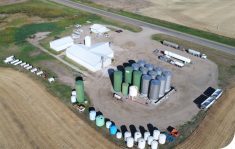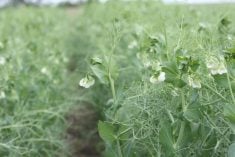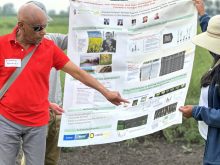As Iogen Corp. creeps closer to deciding where to locate its cellulose-based ethanol plant, a smaller project has already targeted a western Canadian town as the ideal spot.
The Nipawin Ethanol Co-operative recently secured $950,000 in funding from the Canada-Saskatchewan Western Economic Partnership Agreement to complete a business and engineering plan to build a 75 million litre facility in the community starting in 2007.
A committee has been working on the project since 2002 but the government funding that arrived in late March has enabled the group to hire the Saskatchewan Research Council to develop the gasification technology that it will use to turn forestry and crop residue into ethanol.
Read Also

Volunteers help exotic animal farm rebuild
Exotic animal farm loses beloved camel and pony to huge hail storm that gripped the Brooks, Alta. area as a community member starts a fundraiser to help the family recover from the financial and emotional damage.
The proposed facility will be similar to the 300 million litre plant Iogen plans to build in Vegreville, Alta., Birch Hills, Sask., or Idaho Falls, Idaho. A decision on the location of that $250 million plant is expected soon, with construction slated to begin in 2006.
Both projects have been in the planning phase for a long time, but that is to be expected when dealing with groundbreaking technology, said Sherry Michalyca, Nipawin’s economic development officer. These are not run-of-the-mill, grain-based plants producing ethanol for fuel and distillers grain for the cattle industry.
“Science knows we can create ethanol out of these (cellulose) products. The question is, what is the best way to do it and can we do it economically?”
Some of the answers are starting to filter in.
“Preliminary estimates show the cost per litre is half that of a grain based ethanol plant,” said Michalyca.
“Also, capital costs are lower. And you’re not dependent on the cattle industry. And you’re not dependent on subsidies when you have those economics.”
Both plants will rely on cellulose or plant residue as their raw inputs. Iogen will use cereal straw while the Nipawin project will focus on flax straw and forestry byproducts.
“The potential is huge on the agriforestry side,” said Michalyca.
Local producers will be able to harvest trees for timber and sell the scrap material from that process to the ethanol co-op.
“We would use the leftovers. This process isn’t that picky,” she said.
The plant is expected to use 150,000 tonnes of raw material a year, generating about $6 million in revenue for local farmers and forestry companies.
Nipawin was picked for the project due to its proximity to forest and farmland.
Within a 100 kilometre radius of the town are more than 70 forestry companies and one million acres of cultivated land producing 500,000 tonnes of biomass annually, including lots of flax.
About $2 million has been raised to complete the business and engineering plans, complete environmental, marketing and feedstock analyses and commercialize the tailor-made gasification technology.
In addition to producing ethanol, the plant will be able to make other high value products like ethylene, which is used to make plastics.
Once operational, the plant will employ 60-70 people. Additional jobs will be created on the procurement side of the business.
Michalyca doesn’t know when the co-op will begin its main fundraising campaign to raise the $30-$50 million needed to build the plant.

















